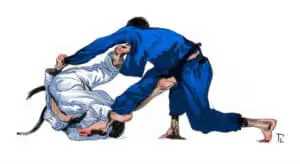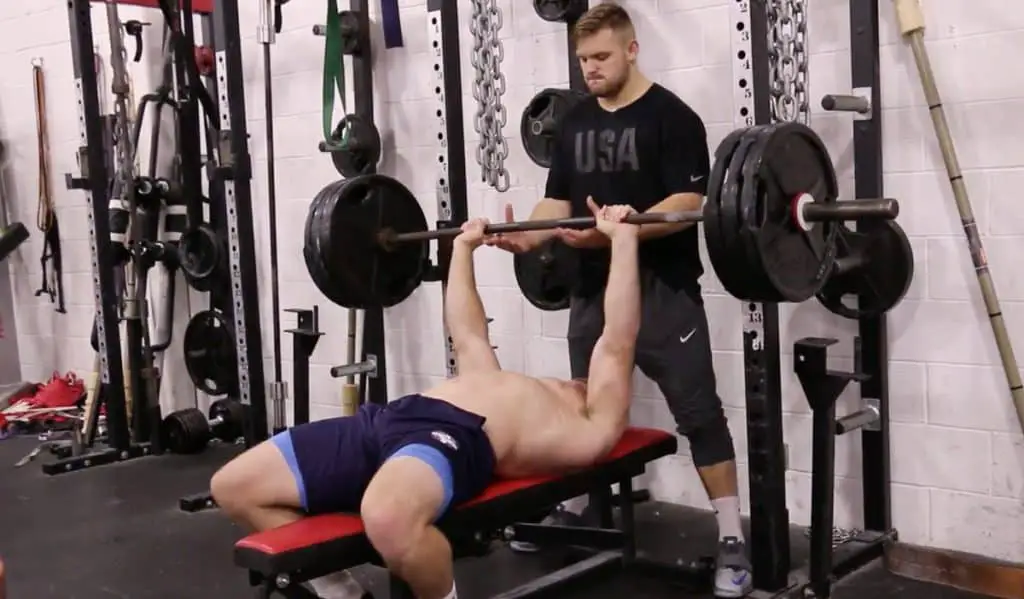
Wrestling is not an easy sport. It places an immense amount of stress on athletes’ necks, backs, shoulders, knees and ankles. Injuries are common with an injury of 9.6 per 1000 athlete exposures and recent research has revealed that college wrestlers are more likely to suffer concussions than NCAA football players. In this article we will show you how wrestlers look after themselves on and off the mats!
How Do Wrestlers Prevent Injuries?
Wrestlers prevent injuries by performing an extensive warm up before every training. They perform strength exercises to make their muscles and ligaments less susceptible to injury. They modulate training intensity. They eat a nutritious diet and get plenty of sleep (8 hours a night).
Why Do Wrestlers Warm Up For So Long?
Wrestlers perform a long warm up to activate their muscles, increase their mobility, prepare their mind for training and to reduce the chance of injury. This is all done to increase wrestling performance during training.

A wrestling warm up typically lasts for 30 minutes and its primary purpose is to get the athlete ready to perform at their best and finish the training session without injury.
A wrestling warm up starts with jogging combined with dynamic stretching to get the athlete’s body warm and start increasing mobility. Common dynamic stretches include high knees, kickbacks, carioca.
After dynamic stretching athletes will then perform some speed and jumping exercises to prepare the body for the explosivity of wrestling. These include sprints, tuck jumps, shuttle runs and bounding broad jumps.
Then it is time to perform basic gymnastic movements. These are used to improve body awareness and coordination as wrestling moves often have many steps and require great body control to perform correctly. Common gymnastic movements include forward rolls, headsprings, shoulder rolls, cartwheels and handstand.
After gymnastic movements wrestlers will then do some ballistic and static stretches. Common ballistic stretches include leg swings and high kicks while popular static stretches include getting into the split position and butterfly stretch.
The warm up concludes with some calisthenics and neck strengthening exercises to strengthen the body and activate the muscles so they are responsive during training. Bodyweight squats, push ups, sit ups and bridge variations are popular.
A wrestler who has undergone an extensive warm up is much less likely to suffer an injury than a wrestler who hasn’t warmed up. Muscles and joints which are cold and have not been gradually activated are susceptible to tears and strains especially when performing explosive movements such as shooting and defending takedowns over and over again.
An effective warm up should be designed based on the sport it is being used to prepare athletes for and the length of the training session. As a typical wrestling training session lasts for 2 hours the warm up should be 30 minutes. Also because wrestling places lots of stress on the legs, back and neck these areas are focused on during the warm up.
Why Do Wrestlers Perform Strength Exercises?
Wrestlers perform strength exercises to protect their muscles and ligaments from injury and to increase the power out capability which helps them attack and defend against takedowns.
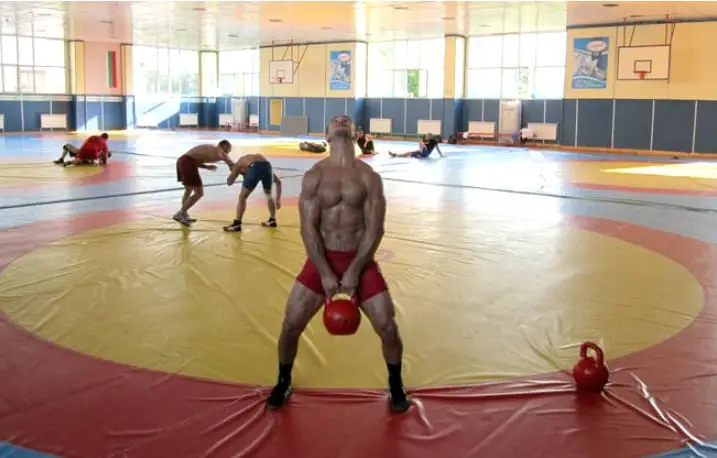
A muscular wrestler who has strong muscles and ligaments is less likely to become injured than a weak, skinny wrestler.
Strong muscles and ligaments are able to handle more abuse and damage than weak ones. A strong wrestler can absorb blows and strikes to their body that would injure an untrained person.
The extra muscle wrestlers add to their frames acts as a suit of body armour, allowing them to withstand ridiculous amounts of punishment.
Wrestlers place extra focus on strengthening their necks, arms, shoulders, legs and backs. To develop their necks wrestlers perform different bridging variations where they place their weight on their neck and rock back and forth. They also perform headstands and jump back and forth from a back bridge to a front bridge.
To develop their arms and shoulders wrestlers perform rope climbs, dips and push ups. To develop their backs wrestlers will perform lots of pull ups and hyperextensions.
Wrestlers Alter Training Intensity To Reduce Risk Of Injury
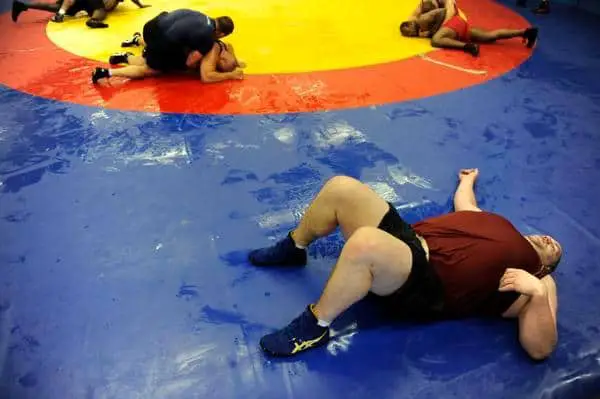
Wrestlers are most likely to become injured when sparring at a high intensity. To reduce the chance of suffering injuries coaches will only allow their wrestlers to spar at a high intensity at certain times of the year and for only brief periods of time.
Most wrestling training, around 70% occurs at a medium intensity. Then 15% occurs at a high intensity and 15% at a low intensity.
Coaches usually have their wrestlers sparring hard in the weeks leading up to big competitions before reducing the training intensity and limiting sparring in the week of competition.
In preparation for these big competition coaches will usually design 8 week training protocols where athletes will spar hard for 5 to 6 weeks.
If wrestlers sparred hard for 60 minutes every training session they would all be injured all the time and the training would be ineffective. Even when limiting hard sparring athletes get injured a lot. If there was no training modulation the injury rate would sky rocket.
Wrestlers Use Ideal Technique To Reduce Their Chance Of Injury
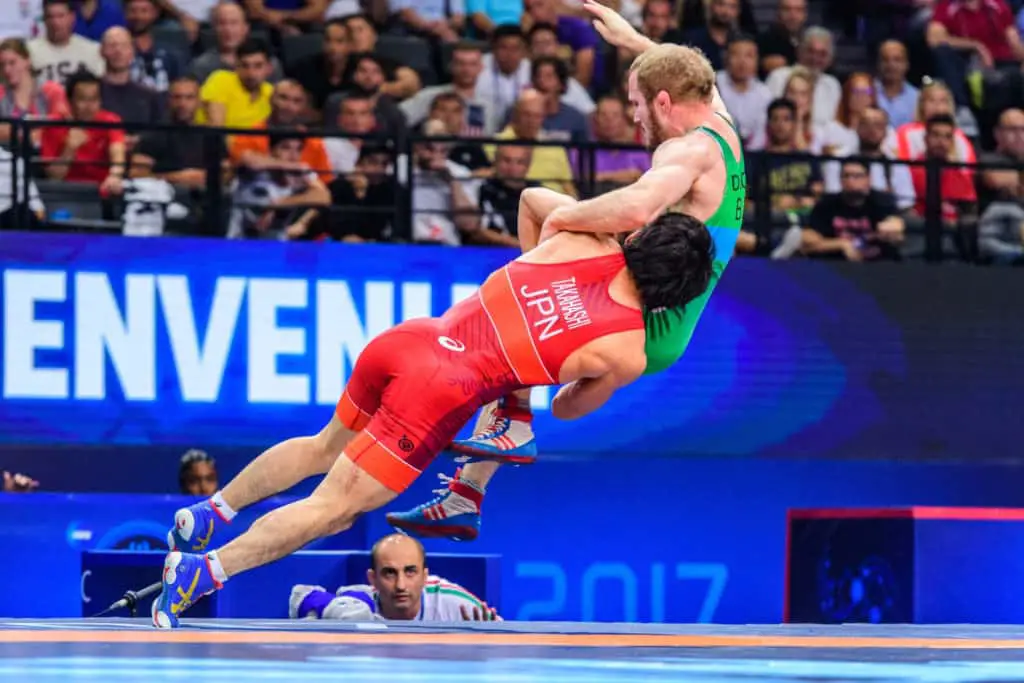
All of the common techniques in wrestling have been designed to maximise effectiveness while also minimising injury risk.
Let’s look at a double leg for example. You don’t just keep your back straight and head up because it helps you generate maximum power you also do it so you don’t strain your back or neck.
A wrestler who uses poor technique is more likely to suffer an injury than a wrestler with textbook technique. Poor technique places additional stress on body parts which may not be able to handle it. For example if a wrestler steps in close squats and keeps a flat back before lifting their opponent their chance of injury is very low.
However, if that same wrestler attempts to pick his opponent up when he is standing too far away, with a bent back and not using his legs his chance of injury shoots up dramatically.
Poor technique also puts the body into a compromising position where injuries are likely to occur. If a wrestler shoots a takedown with a bent neck then an opponent’s sprawl could easily lead to a strained muscle or herniated disc. This is much less likely to happen if a wrestler is able to maintain a strong straight neck throughout contact.
Wrestlers Get Plenty Of Sleep To Prevent Injuries And Recover From Training
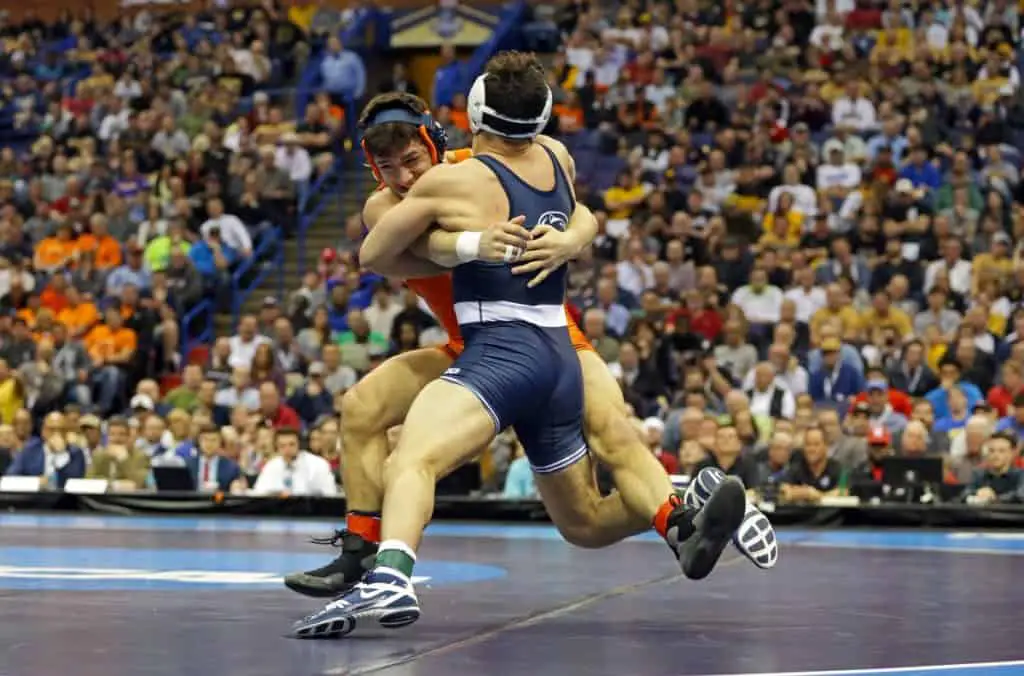
Studies have shown just how important sleep is for wrestlers and athletes who want to recover from training and avoid suffering injuries.
A lack of sleep places wrestlers at significant risk of injury. The latest scientific studies have shown that athletes who average less than 5 hours of sleep per night are 4.5 times more likely to catch an infection compared to those who get 7 hours.
Current research has also revealed that athletes who sleep less than 8 hours per night are 1.7 times more likely to be injured than those who regularly get 8 hours or more rest.
Wrestlers Eat A Nutritious Diet To Reduce Risk Of Injury

Performing a thorough warm up, keeping your back straight and head up on double legs and getting your 8 hours of sleep every night are not the only methods wrestlers use to avoid injuries. Wrestlers also make sure they are eating a diet with enough calories to fuel their gruelling workouts.
Wrestlers have to eat a lot of food to give them energy to wrestle for hours 5 to 6 days a week. If wrestlers do not eat enough calories they suffer from chronic fatigue making them more likely to suffer injuries and not recover from existing ones.
To ensure wrestlers are recovering and ready to go for their next training session they load up on protein (at least 1g per pound of bodyweight) from meat, carbs from rice, fruit and pasta and vegetables for their nutrients.
